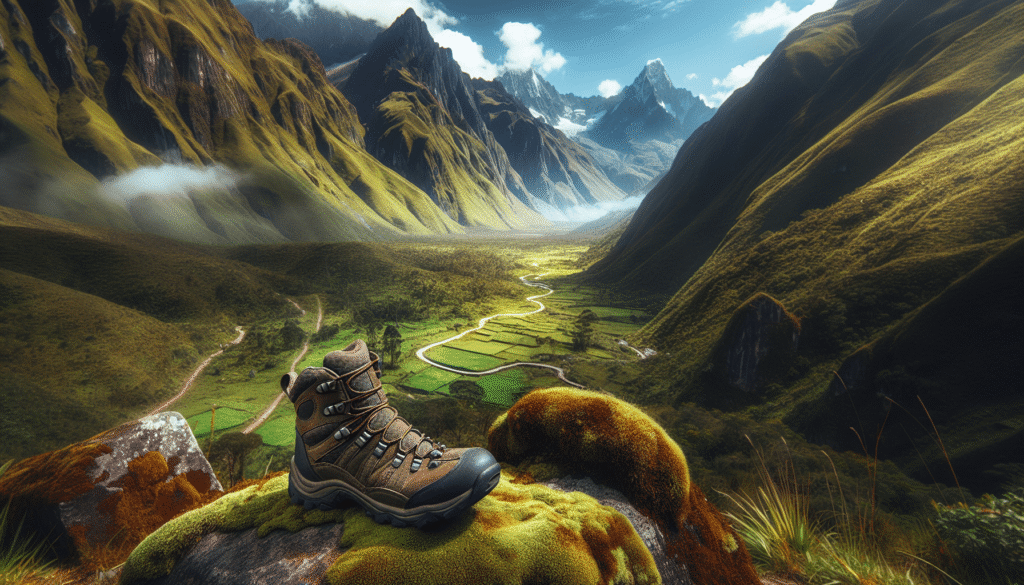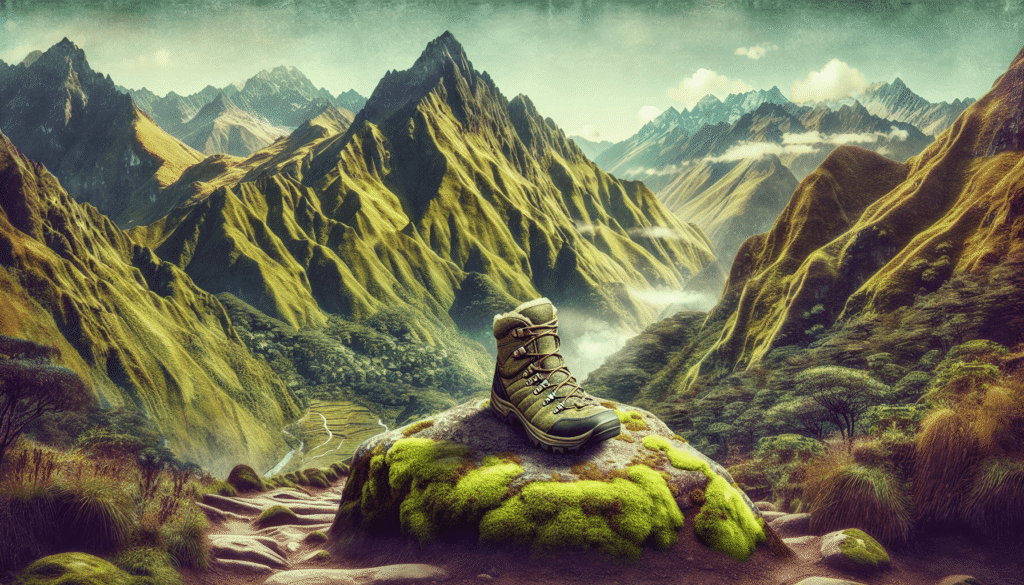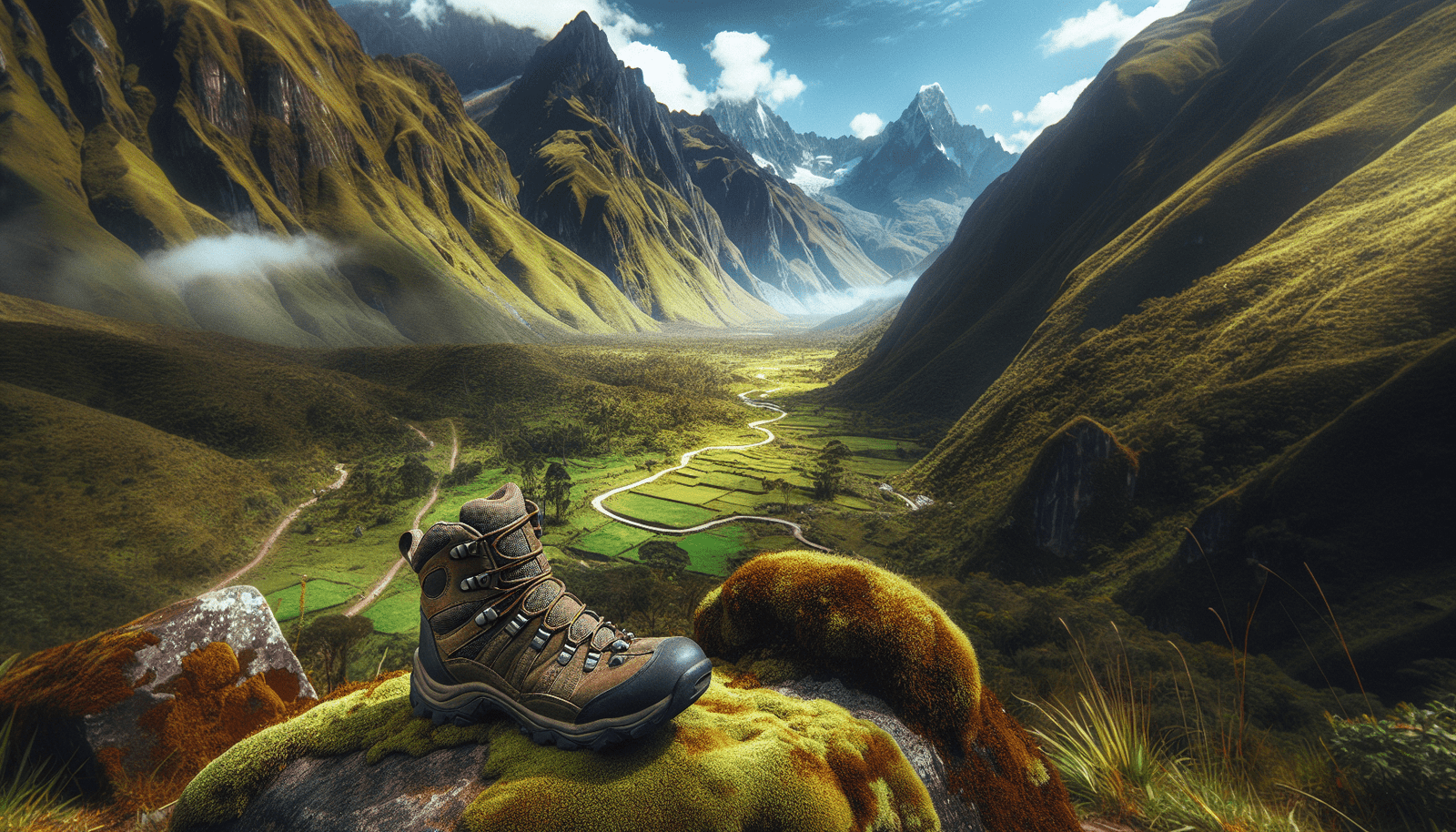What do you imagine when you think of trekking through majestic mountains, breathing fresh air, and experiencing vibrant cultures? The Andes Mountain Trail in Peru offers a breathtaking adventure that combines stunning natural beauty with rich history and vibrant local traditions. Whether you’re a seasoned trekker or just starting out, there’s something for everyone along this incredible route.
Overview of the Andes Mountain Trail
The Andes Mountain Trail is one of the most famous trekking paths in the world, stretching across several countries in South America, with a prominent and beautiful section in Peru. What makes this trail so special? It’s not just the towering peaks and stunning vistas; it’s also the fascinating cultural experiences you’ll encounter along the way.
Geography and Scenery
As you journey through the Andes in Peru, you’ll find yourself surrounded by breathtaking landscapes. From snow-capped peaks and lush valleys to vibrant high-altitude lakes, the geography is as diverse as it is beautiful. Here’s a quick look at some key geographical features you may encounter:
| Feature | Description |
|---|---|
| Mountain Peaks | Home to some of the highest peaks in the world, including Huascarán and Ausangate. |
| Valleys | The Sacred Valley of the Incas, rich in history and beauty. |
| Lakes | High-altitude lakes such as Lake Titicaca, known for its cultural significance. |
| Inca Ruins | Remnants of ancient civilizations can be found along the trail. |
This diversity not only makes your trek visually stunning, but it also enriches your understanding of the region’s natural wonders.
Preparing for Your Adventure
Planning a trek on the Andes Mountain Trail requires some preparation. Here’s what you need to consider to ensure that you have a safe and enjoyable experience.
When to Go
The best time to hike the Andes is during the dry season, which typically runs from May to September. During these months, the weather is generally milder, and you’ll have better visibility for stunning views. However, be prepared for colder temperatures at night, especially at higher elevations.
Getting There
To get started on the Andes Mountain Trail, most trekkers fly into Cusco. This historic city is a great place to acclimatize due to its high altitude (over 11,000 feet!). You can reach the starting point of the Inca Trail, for example, by taking a train or a bus from Cusco.
Altitude Awareness
One of the most crucial aspects to consider while trekking in the Andes is altitude sickness. Even if you’re in great shape, the high elevations can pose challenges. It’s vital to acclimatize properly. Here are some symptoms to watch for:
| Symptom | Description |
|---|---|
| Headache | Often one of the first signs of altitude sickness. |
| Nausea | Can occur as your body adjusts to thinner air. |
| Fatigue | You may feel unusually tired even with minimal exertion. |
| Dizziness | An indication that your body needs more oxygen. |
To mitigate these risks, ascend slowly, stay hydrated, and take time to rest.

What to Pack
Packing wisely for your trek is essential for comfort and safety. Here’s a list of items you should consider bringing along:
| Item | Description |
|---|---|
| Sturdy Footwear | Invest in a good pair of hiking boots that offer ankle support. |
| Clothing Layers | Dress in layers to adjust to varying temperatures and weather conditions. |
| Hydration System | A hydration pack or water bottles will be crucial. You may also want to bring a water purification system. |
| Snacks | High-energy bars, nuts, and other lightweight snacks can keep your energy up during long hikes. |
| First Aid Kit | Basic supplies for treating minor injuries should always be included. |
It’s also helpful to consult with your trekking company for recommended gear specific to the trail you’re taking.
Trekking Routes on the Andes Mountain Trail
The Andes Mountain Trail features several routes, each with its unique charm and challenges. Below are some popular trekking options.
The Inca Trail
The Inca Trail is perhaps the most famous route in the Andes, leading to the iconic Machu Picchu. This four-day trek combines breathtaking landscapes, lush cloud forests, and ancient ruins.
Key Highlights
- Dead Woman’s Pass: The highest point on the trek at over 13,000 feet, offering stunning views.
- Wiñay Wayna: A beautiful archaeological site that showcases the ingenuity of the Inca civilization.
- Mach Picchu: The magnificent ancient city that awaits you at the end of your trek.
Lares Trek
If you prefer a less crowded alternative to the Inca Trail, the Lares Trek offers stunning scenery and a genuine glimpse into indigenous culture.
Unique Features
- Hot Springs: Enjoy a relaxing soak in natural thermal baths after a long day of hiking.
- Traditional Villages: Interact with local communities and learn about their customs and way of life.
- Vast Scenery: Experience diverse landscapes, from snow-capped mountains to vibrant green valleys.
Salkantay Trek
Taking a more rugged approach, the Salkantay Trek is a great option for experienced trekkers seeking adventure.
What to Expect
- Salkantay Mountain: Witness the beauty of one of Peru’s highest peaks.
- Varied Landscapes: Transition from tropical vegetation to alpine scenery in just a few days.
- Fewer Crowds: Enjoy a sense of solitude and connection with nature away from the more crowded paths.

Cultural Experiences Along the Trail
One of the most rewarding aspects of trekking the Andes Mountain Trail is the opportunity to engage with local cultures. You’ll find villages and communities that offer unique insights into their traditions, crafts, and ways of life.
Traditional Festivities
Throughout the year, you’ll encounter various festivals that celebrate the rich heritage of the Andean people. Participating in these events can deepen your understanding and appreciation of their customs.
| Festival | Description |
|---|---|
| Inti Raymi | The Festival of the Sun, celebrated in Cusco during the winter solstice. |
| Corpus Christi | A vibrant festival showcasing religious processions and local food. |
| Pacha Mama Day | Celebrating Mother Earth with rituals and offerings. |
Local Gastronomy
The Andean region is home to diverse culinary traditions that vary from village to village. Don’t miss the chance to try local dishes like:
| Dish | Description |
|---|---|
| Ceviche | Fresh fish marinated in citrus juices, often served with onions and chili. |
| Alpaca Steak | A lean and flavorful meat option that is common in the area. |
| Quinoa Dishes | Versatile and nutritious, quinoa is celebrated for its health benefits. |
Handicrafts and Art
Local artisans produce beautiful handicrafts that showcase their traditions. Be sure to check out woven textiles, pottery, and jewelry. Not only are these items beautiful, but purchasing them supports the local economy and craftsmanship.
Safety Tips for Trekking
While the Andes Mountain Trail offers an unforgettable adventure, it’s important to prioritize safety. Here are several tips to keep in mind as you enjoy your trek.
Stay Hydrated
High altitudes can lead to dehydration without you realizing it. Make it a habit to drink water regularly, even if you don’t feel thirsty.
Listen to Your Body
If you start to experience symptoms of altitude sickness or fatigue, take the time to rest. Pushing yourself too hard can lead to serious consequences.
Trek with a Guide
Hiring an experienced local guide can enhance your journey significantly. They not only know the safest routes but can also share knowledge about the culture, history, and geology of the region.
Travel Insurance
Acquiring travel insurance that covers trekking activities is advisable. Ensure that it includes provisions for emergency evacuation should you need urgent medical attention.
Sustainable Trekking Practices
As you embark on your adventure, keep in mind the importance of preserving the environment and supporting local communities. Here are some ways you can practice sustainability while trekking in the Andes:
Leave No Trace
It’s vital to minimize your impact on the environment. Follow the Leave No Trace principles by taking out whatever you bring in and avoiding damaging flora and fauna.
Respect Local Cultures
Learn to approach local customs with respect. Whether it’s asking permission to take photos or learning a few phrases in the local language, being considerate goes a long way.
Support Local Businesses
Choose local guides, accommodation, and restaurants whenever possible. Your choices can help sustain local economies and provide authentic experiences.
Concluding Thoughts
Isn’t it amazing how a trek can combine breathtaking scenery, rich history, and unforgettable cultural experiences? As you prepare for your journey on the Andes Mountain Trail, keep these insights in mind to ensure you have a rewarding adventure. With every step, you’ll not only connect with nature but also deepen your understanding of the vibrant cultures that call this stunning region home.
All the elements—the stunning landscapes, the engaging local culture, and the challenge of the hike itself—combine to create an experience that you will treasure long after you’ve returned home. Being well-prepared, mindful, and respectful will not only enhance your experience but also leave a positive impact on the beautiful region of the Andes. Enjoy every moment of your adventure!

